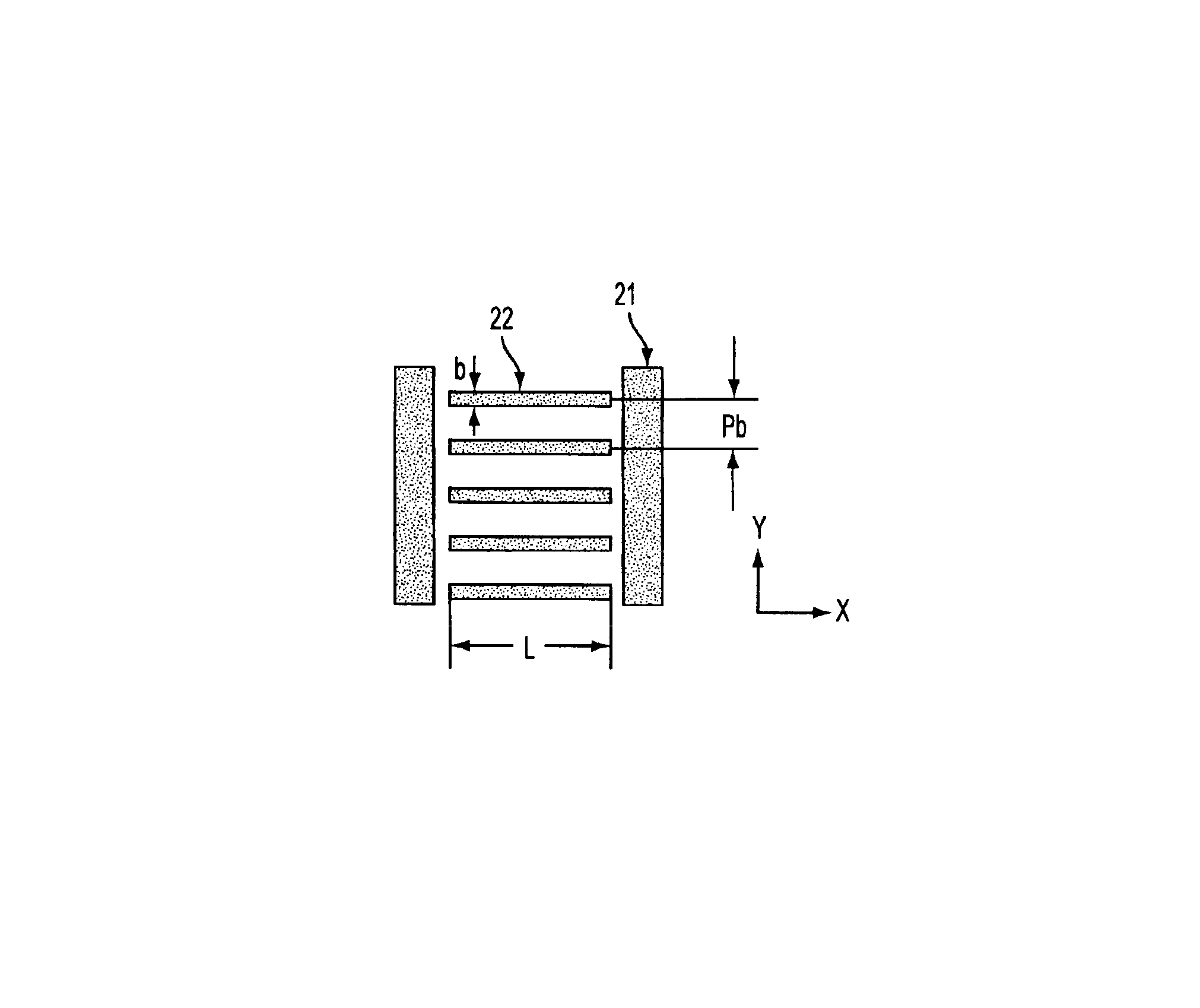Optical proximity correction method utilizing ruled ladder bars as sub-resolution assist features
- Summary
- Abstract
- Description
- Claims
- Application Information
AI Technical Summary
Benefits of technology
Problems solved by technology
Method used
Image
Examples
first embodiment
[0042]FIG. 2 illustrates an exemplary mask utilizing the ladder bar assist features (also referred to as ladder bars) of the present invention. Referring to FIG. 2, a plurality of ladder bar assist features 22 are placed between main features 21. Importantly, each of the ladder bar assist features 22 is positioned such that the longitudinal axis of the ladder bar assist feature 22 extends perpendicularly to the longitudinal axis of the main features 21. As shown, the ladder bar assist features 22 extend parallel to one another. In addition, the length of the ladder bar assist features of the given embodiment is such that the ladder bars 22 extend substantially the entire length of the space between the edges of the main features 21. In the embodiment illustrated in FIG. 2, the ladder bars 22 do not contact the edges of the main features 21. It is noted, however, that it is also possible for the ladder bars 22 to contact the edges of the main features.
[0043]Further, as with scatter b...
second embodiment
[0050]In accordance with the present invention, the length of the ladder bar assist features disposed between the main features are variable. As explained in further detail below, by varying the length of the ladder bar assist features it is possible to introduce a frequency component associated with the ladder bar assist features that provides for additional image control.
[0051]FIG. 3 illustrates an exemplary mask utilizing the second embodiment of the ladder bar assist features of the present invention. As shown in FIG. 3, the ladder bar assist features 32 do not extend across the entire space between the main features 31, and the length of each of the ladder bar assist features is equal. As a result, the ladder bar assist features can be considered a group 33, which possesses a unique size and frequency when the group is repeatedly disposed between main features 31. FIG. 3 illustrates a single group 33 disposed between two main features 31. It is noted that the length of the ladd...
PUM
 Login to View More
Login to View More Abstract
Description
Claims
Application Information
 Login to View More
Login to View More - R&D
- Intellectual Property
- Life Sciences
- Materials
- Tech Scout
- Unparalleled Data Quality
- Higher Quality Content
- 60% Fewer Hallucinations
Browse by: Latest US Patents, China's latest patents, Technical Efficacy Thesaurus, Application Domain, Technology Topic, Popular Technical Reports.
© 2025 PatSnap. All rights reserved.Legal|Privacy policy|Modern Slavery Act Transparency Statement|Sitemap|About US| Contact US: help@patsnap.com



